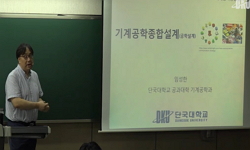본 연구의 목적은 한국 남녀 대학생 543명을 대상으로 한국판 정체감 유형 척도 5(Korean Identity Style Inventory 5)를 타당화하는 것이다. 정체감 유형 척도 5(ISI-5; Berzonsky 외, 2013)는 사회인지적 관점...
http://chineseinput.net/에서 pinyin(병음)방식으로 중국어를 변환할 수 있습니다.
변환된 중국어를 복사하여 사용하시면 됩니다.
- 中文 을 입력하시려면 zhongwen을 입력하시고 space를누르시면됩니다.
- 北京 을 입력하시려면 beijing을 입력하시고 space를 누르시면 됩니다.
https://www.riss.kr/link?id=T13354352
- 저자
-
발행사항
서울 : 한국상담대학원대학교, 2014
-
학위논문사항
학위논문(석사) -- 한국상담대학원대학교 , 상담학과 아동청소년상담 , 2014. 2
-
발행연도
2014
-
작성언어
한국어
- 주제어
-
발행국(도시)
서울
-
형태사항
vi, 74 p. ; 26 cm
-
일반주기명
지도교수: 심혜원
- 소장기관
-
0
상세조회 -
0
다운로드
부가정보
국문 초록 (Abstract)
본 연구의 목적은 한국 남녀 대학생 543명을 대상으로 한국판 정체감 유형 척도 5(Korean Identity Style Inventory 5)를 타당화하는 것이다. 정체감 유형 척도 5(ISI-5; Berzonsky 외, 2013)는 사회인지적 관점에서 정체감의 형성과정을 측정하기 위해 개발하고 타당화한 척도이다. ISI-5를 한국어판으로 타당화 하기 위해 역번역 방법의 번안과정을 거친 후 요인분석과 상관분석을 실시하였다.
탐색적 요인분석을 실시한 결과 ‘정보지향 정체감 유형’, ‘규범지향 정체감 유형’, ‘혼돈/회피지향 정체감 유형’의 세 개의 하위요인 구조를 보였으며, 세 유형의 척도는 각각 정보지향 5문항, 규범지향 4문항, 혼돈/회피지향 5문항으로 총 14문항을 한국판 정체감 유형 척도 5(K-ISI 5)로 확정하였다. 확인적 요인분석 결과 적합도 지수는 TLI = .899, CFI = .91, RMSEA = .06, GFI = .93, AGFI = .90으로 나타나 하위 요인구조에 대한 모형의 적합도는 양호한 것으로 확인되었다. 한국판 정체감 유형 척도의 하위요인 별 문항간 내적 합치도는 정보지향 .82, 규범지향 .54, 혼돈/회피지향 .69, 관여 .85로 나타났다.
수렴타당도를 위해 ‘관여’, ‘자존감,’ ‘자아정체성 지위척도’, ‘스트레스 대처 전략 검사’와의 상관분석을 실시하였으며, 그 결과 정보지향은 관여, 자존감, 자아정체감 성취 상태, 문제해결중심 대처, 사회적 지지추구 대처와 유의한 정적상관을 보였으며, 규범지향은 관여, 자존감과는 상관을 보이지 않았고 자아정체감 유예 상태, 회피중심 대처, 사회적 지지추구 대처와 유의한 정적상관을 보였으며, 혼돈/회피지향은 관여, 자존감과 유의한 부적상관을 보이고 자아정체감 혼돈 상태, 회피중심 대처와는 정적상관을 보임으로써 한국판 정체감 유형 척도 5의 수렴타당도를 확인할 수 있었다.
이상의 결과를 근거로 본 연구에서 드러난 제한점과 후속 연구를 위한 제언 및 본 연구가 갖는 의의에 대해 논의하였다.
다국어 초록 (Multilingual Abstract)
The purpose of this study was to validate the Korean version of Identity Style Inventory 5(ISI-5) with 543 Korean college students. The ISI-5 was developed and validated by Berzonsky(2013) to measure of identity processing style in social-cognitive pe...
The purpose of this study was to validate the Korean version of Identity Style Inventory 5(ISI-5) with 543 Korean college students. The ISI-5 was developed and validated by Berzonsky(2013) to measure of identity processing style in social-cognitive perspective.
To validate the Korean version of ISI-5, two bilinguals translated the Inventory from English to Korean and back-translated from Korean to English. Two native speakers of English evaluated the sameness between the original ISI-5 and back-translated version.
Exploratory Factor Analysis(EFA) yielded three-factor solution of the Korean ISI 5: Informational Identity Style, Normative Identity Style, Diffuse/Avoidant Identity Style. These three style scales were identified by EFA: A 5-item Informational Style Scale, a 4-item Normative Style Scale, a 5-item Diffuse/Avoidant Style Scale. Confirmatory Factor Analysis revealed that this three factor structure was an acceptable fit. Several indices were inspected to confirm the model fit such as the following: Tucker-Lewis Index(TLI = .899), Comparative Fit Index(CFI = .91), Root Mean Square Error of Approximation(RMSEA = .06), Goodness of Fit Index(GFI = .93), Adjusted Goodness of Fit Index(AGFI = .90).
Cronbach Alphas for the scores on the ISI-5 scales were as follows: Informational .82, Normative .54, and Diffuse/Avoidant Styles .69, and Commitment .85.
Convergent Validity was demonstrated by assessing the correlations between the ISI-5 and measures of commitment, self-esteem, Ego Identity Status, and Coping Strategy Indicator. From the result, Informational Identity Style was positively associated with commitment, self-esteem, identity achievement status, Problem Solving, and Seeking Social Support. Normative Identity Style was positively associated with identity moratorium status, Avoidance and Seeking Social Support. Diffuse/Avoidant Identity Style was negatively related to commitment, and self-esteem, whereas being positively associated with identity diffuse status, and Avoidance.
From such results, limitations, suggestions for future research and implications were discussed.
목차 (Table of Contents)
- I. 서론 1
- 1. 연구의 필요성 1
- 2. 연구문제 6
- 3. 용어의 정리 7
- I. 서론 1
- 1. 연구의 필요성 1
- 2. 연구문제 6
- 3. 용어의 정리 7
- II. 이론적 배경 8
- 1. 정체감(Identity) 8
- 1) Erikson의 정체감 8
- 2) Marcia의 자아정체감 상태 모델 11
- 3) Berzonsky의 관점 15
- 2. Berzonsky의 정체감 유형(Identity Style) 모델 16
- 1) 정체감 유형에 관한 개념 16
- 2) 정체감 유형 척도의 개발과정 20
- 3) 정체감 유형 관련 변인 연구 23
- III. 연구방법 26
- 1. 연구대상 26
- 2. 연구절차 27
- 3. 연구도구 28
- 1) 한국판 정체감 유형 척도와 관여 척도 28
- 2) 자아정체성 지위 척도 2 29
- 3) 자아존중감 척도 30
- 4) 한국판 스트레스 대처 전략 검사 31
- 4. 자료 분석 32
- IV. 연구결과 34
- 1. 탐색적 요인분석 결과 34
- 2. 확인적 요인분석 결과 38
- 3. 수렴타당도 검증 결과 40
- 1) 정체감 유형과 관여, 자존감과의 상관 40
- 2) 정체감 유형과 자아정체감 상태와의 상관 41
- 3) 정체감 유형과 스트레스 대처 전략과의 상관 42
- 4. 한국판 정체감 유형 척도의 신뢰도 43
- 5. 성별, 학년, 전공만족도에 따른 정체감 유형의 차이 43
- V. 논의 및 제언 44
- 1. 연구 결과에 대한 논의 44
- 2. 연구의 제한점 및 후속 연구에 대한 제언 48
- 3. 연구의 의의 50
- 참고문헌 51
- 부록 61
- Abstract 73









